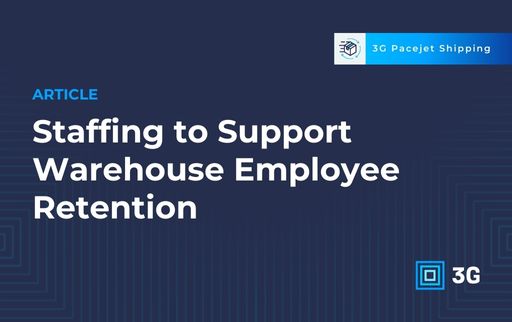Blog
Staffing to support employee retention

When the labor market is tight, or an “employees’ market,” companies do all they can to attract and retain staff. They must evaluate their staffing strategy if they’re experiencing gaps in their hiring process. No matter the current labor market, companies would do well to keep their employees satisfied and maintain the best practices for staffing, whether for back-office positions or warehouse operations.
How to prioritize retention while onboarding and training
Onboarding and training help shape new employees’ first impressions and the foundation of their experience at the company. The strategies companies use can determine whether they decide to stick around.
Onboarding and training should provide information but also show that the company is invested in its employees. When a company’s values are shown and are not simply a talking point, employees can get a better picture of what the job will be like after the newness wears off.
A new, permanent employee sticking around for the first 90 days can be a good indicator they’ll continue working for a year or longer. Prioritizing the first months after hiring is important, and long-term employee satisfaction should also be a continual priority.
Technology is a key area where staff can feel support or frustration. Maintaining a strategic tech stack can help employees excel at their jobs and open up advancement opportunities. By investing in technology, the company is also investing in its people.
Onboarding and training temporary staff
The biggest challenge when planning onboarding and training for temporary staff is finding the right amount of information they need to be successful. Too much training can be overwhelming; too little can prevent them from performing their jobs well. Technology can be a valuable tool in achieving a good balance, giving temporary hires a tool designed to be intuitive and allow them to hit the ground running sooner.
How does automation factor into new staffing needs?
Automation can be a tool for increasing productivity for employees by handling simple and repetitive tasks. It’s meant for steps in the workflow that don’t require complex decision-making, so employees spend their time on higher-value tasks, which aren’t replaceable by automation. Where automation shines is enabling greater productivity.
Supporting employee retention and career growth
Okuma Fishing is one example of using technology to increase employee retention. The wholesale supplier of sport fishing gear invested in Pacejet’s shipping solution to help increase their productivity, receiving and processing orders faster and reordering on a shorter cycle. The result was sales growth for the business along with career growth for their employees.
A warehouse packer, since promoted to Logistics Analyst, saw the technology investment as an opportunity. It created a more productive working environment and allowed him to apply his expertise toward managing workflows and processes, earning him another promotion related to technology implementation. By investing in employees, Okuma Fishing is better able to attract and retain talent.
Staying competitive
In the search for ways to stay competitive by keeping costs down and avoiding waste, companies must examine their tech stacks as well as their staffing. Technology can increase productivity for operations and open the door for employee advancement. Companies must also be competitive in the context of the labor market, reducing turnover by providing the support, including technology, that creates a great place to work.
If you are considering purchasing a shipping software, download our buyers guide to ensure you know the right questions to ask when evaluating a shipping software.







